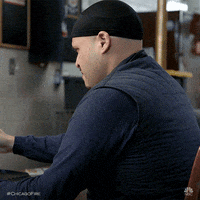No crime in American history-- let alone a crime that never occurred-- produced as many trials, convictions, reversals, and retrials as did an alleged gang rape of two white girls by nine black teenagers on a Southern Railroad freight run on March 25, 1931. Over the course of the two decades that followed, the struggle for justice of the "Scottsboro Boys," as the black teens were called, made celebrities out of anonymities, launched and ended careers, wasted lives, produced heroes, opened southern juries to blacks, exacerbated sectional strife, and divided America's political left.
Hoboing was a common pastime in the Depression year of 1931. For some, riding freights was an appealing adventure compared to the drudgery and dreariness of their daily lives. Others hopped rail cars to move from one fruitless job search to the next. Two dozen or so mainly male--and mainly young--whites and blacks rode the Southern Railroad's Chattanooga to Memphis freight on March 25, 1931. Among them were four black Chattanooga teenagers hoping to investigate a rumor of government jobs in Memphis hauling logs on the river and five other black teens from various parts of Georgia. Four young whites, two males and two females dressed in overalls, also rode the train, returning to Huntsville from unsuccessful job searches in the cotton mills of Chattanooga.
(LINK TO DIAGRAM OF TRAIN).
Soon after the train crossed the Alabama border, a white youth walked across the top of a tank car. He stepped on the hand of a black youth named
Haywood Patterson, who was hanging on to its side. Patterson had friends aboard the train. A stone-throwing fight erupted between white youths and a larger group of black youths. Eventually, the blacks succeeded in forcing all but one of the members of the white gang off the train. Patterson pulled the one remaining white youth,
Orville Gilley, back onto the train after it had accelerated to a life-endangering speed. Some of the whites forced off the train went to the stationmaster in Stevenson to report what they described as an assault by a gang of blacks. The stationmaster wired ahead. A posse in Paint Rock, Alabama stopped the train.
(LINK TO MAP OF NORTHERN ALABAMA). Dozens of men with guns rushed at the train as it ground to a halt. The armed men rounded up every black youth they could find. Nine captured blacks, soon to be called "
The Scottsboro Boys," were tied together with plow line, loaded on a flat back truck, and taken to a jail in Scottsboro.
Also greeted by the posse in Paint Rock were two mill workers from Huntsville,
Victoria Price and
Ruby Bates. One or the other of the girls, either in response to a question or on their own initiative, told one of the posse members that they had been raped by a gang of twelve blacks with pistols and knives. In the jail that March 25th, Price pointed out six of the nine boys and said that they were the ones who raped her. The guard reportedly replied, "If those six had Miss Price, it stands to reason that the others had Miss Bates." When one of the accused,
Clarence Norris, called the girls liars he was struck by a bayonet. A crowd of several hundred men, hoping for a good old-fashioned lynching, surrounded the Scottsboro jail the night of their arrest for rape. Their plans were foiled, however, when Alabama's governor, B. M. Miller, ordered the National Guard to Scottsboro to protect the suspects.
Trials of the Scottsboro Boys began twelve days after their arrest in the courtroom of Judge A. E. Hawkins. Haywood Patterson described the scene as "one big smiling white face." Many local newspapers had made their conclusions about the defendants before the trials began. One headline read: "ALL NEGROES POSITIVELY IDENTIFIED BY GIRLS AND ONE WHITE BOY WHO WAS HELD PRISONER WITH PISTOL AND KNIVES WHILE NINE BLACK FIENDS COMMITTED REVOLTING CRIME." Representing the Boys in their uphill legal battle were Stephen Roddy and Milo Moody. They were no "Dream Team." Roddy was an unpaid and unprepared Chattanooga real estate attorney who, on the first day of trial, was "so stewed he could hardly walk straight." Moody was a forgetful seventy-year old local attorney who hadn't tried a case in decades.
The defense lawyers demonstrated their incompetence in many ways. They expressed a willingness to have all nine defendants tried together, despite the prejudice such a trial might cause to
Roy Wright, for example, who at age twelve was the youngest of the nine Scottsboro Boys. (The prosecution, fearing that a single trial might constitute reversible error, decided to try the defendants in groups of two or three.) The cross-examination of Victoria Price lasted only minutes, while examining doctors R. R. Bridges and John Lynch were not cross-examined at all. Ruby Bates was not asked about contradictions between her testimony and that of Price. The defense offered only the defendants themselves as witnesses, and their testimony was rambling, sometimes incoherent, and riddled with obvious misstatements. Six of the boys (Andy Wright, Willie Roberson, Charles Weems, Ozie Powell, Olen Montgomery, and Eugene Williams) denied raping or even having seen the two girls. But three others, all who later claimed they did so because of beatings and threats, said that a gang rape by other defendants did occur. Clarence Norris provided what one paper called "the highlight of the trial" when he said of the other blacks, "They all raped her, everyone of them." No closing argument was offered by defense attorneys. A local editorialist described the state's case as "so conclusive as to be almost perfect."
http://law2.umkc.edu/faculty/projects/ftrials/scottsboro/SB_acct.html





































